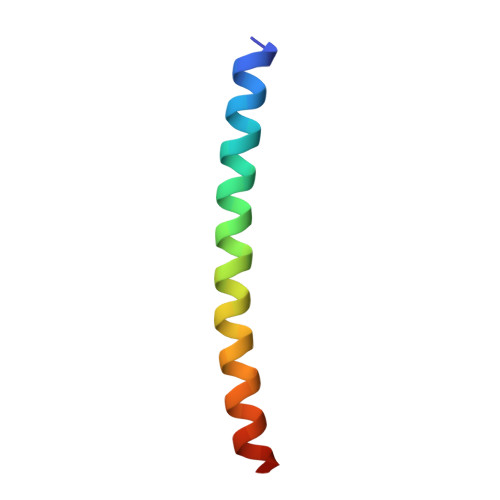Heterodimeric coiled-coil interactions of human GABAB receptor.
Burmakina, S., Geng, Y., Chen, Y., Fan, Q.R.(2014) Proc Natl Acad Sci U S A 111: 6958-6963
- PubMed: 24778228
- DOI: https://doi.org/10.1073/pnas.1400081111
- Primary Citation of Related Structures:
4PAS - PubMed Abstract:
Metabotropic GABAB receptor is a G protein-coupled receptor that mediates inhibitory neurotransmission in the CNS. It functions as an obligatory heterodimer of GABAB receptor 1 (GBR1) and GABAB receptor 2 (GBR2) subunits. The association between GBR1 and GBR2 masks an endoplasmic reticulum (ER) retention signal in the cytoplasmic region of GBR1 and facilitates cell surface expression of both subunits. Here, we present, to our knowledge, the first crystal structure of an intracellular coiled-coil heterodimer of human GABAB receptor. We found that polar interactions buried within the hydrophobic core determine the specificity of heterodimer pairing. Disruption of the hydrophobic coiled-coil interface with single mutations in either subunit impairs surface expression of GBR1, confirming that the coiled-coil interaction is required to inactivate the adjacent ER retention signal of GBR1. The coiled-coil assembly buries an internalization motif of GBR1 at the heterodimer interface. The ER retention signal of GBR1 is not part of the core coiled-coil structure, suggesting that it is sterically shielded by GBR2 upon heterodimer formation.
- Departments of Pharmacology and.
Organizational Affiliation:

















